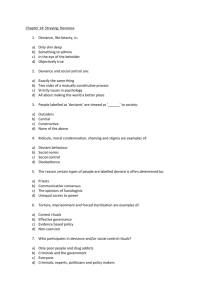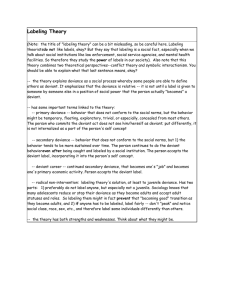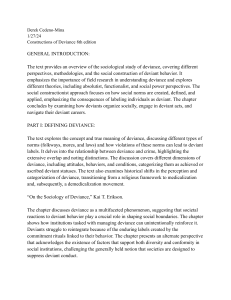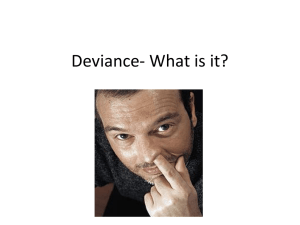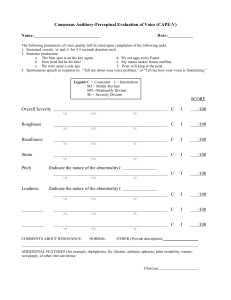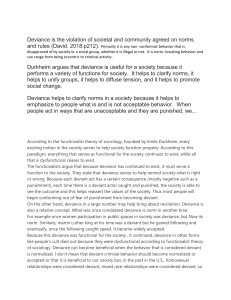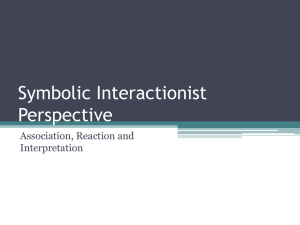Deviance in pre-modern society
advertisement
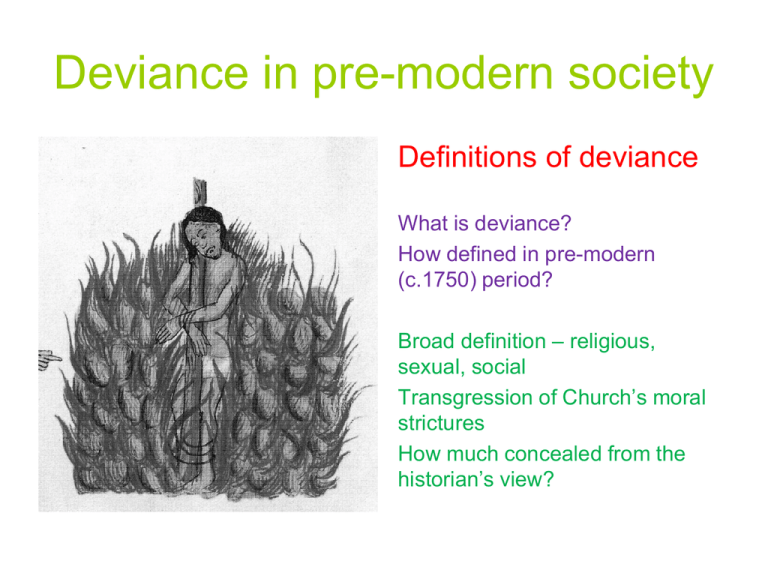
Deviance in pre-modern society Definitions of deviance What is deviance? How defined in pre-modern (c.1750) period? Broad definition – religious, sexual, social Transgression of Church’s moral strictures How much concealed from the historian’s view? Dante’s hierarchy of deviance (from The Divine Comedy early C14th) ) Identification of deviant behaviour common to all societies • Suspect and threatening • Appearance, beliefs and/or lifestyle • Marginalisation, ostracisation, persecution of individuals or groups • Common stereotypes: sexual depravity, criminality, anti-social behaviour • Metaphors of sin, pollution, disease • Cf ‘terrorists’ (Dillinger, 2004) Accusations vs Deviant Groups (from Malcolm Lambert, Medieval Heresy (1992), p. 166) Extreme: blood libel/ritual murder accusation vs Jews Role of the courts/legislation auto da fe = show trial Official treatment of deviants • Fluctuations • Ecclesiastical e.g. Spanish Inquisition • Secular courts often harsher (will execute) • Could be surprisingly lenient • Social relations > heightened tension in post 1500 period Treatment of the ‘Other’ • Diverse societies: minorities integrated • Expulsions > mobile communities • Refugees/diaspora especially by early modern period (post 1500) e.g. moriscos, Huguenots • Scapegoating Socially marginal and mobile Gypsies by Callot c. 1621 C16th and C17th • Fear of vagrants on increase • Criminal gangs imagined • Gypsy/Roma people suspect • Social stability and hierarchy central Social stigmatisation Dishonourable trades Executioner (C16th) • Played important socioeconomic role • Ostracised from polite society • Excluded from citizenship • Physically and socially marginalised • Developed own subculture/networks • Definition of ‘margins’? (Milner) Medieval bath house: often frequented by prostitutes Treatment of diseased Fear of contamination: • Leprosy • Plague • Syphilis • Mental illness • Lunacy • Also strong metaphorical use re deviant groups The court dwarf: Spain and Italy Monstrous births: source of fascination & horror ‘Monk calf’ (C16th Germany) ‘Barking monster’ (C18th England) SIN: a sinful and virtuous woman Questions • In what way group defined as deviant? • What form did marginalisation take? • Was persecution systematic or sporadic, official or popular? • Are there geographical & chronological distinctions to be made? • What do local studies add? • What does it tell us about wider society?



